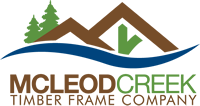We live in an age of immediate gratification. Our electronic devices have access to a myriad of answers to our questions – all done in mere seconds. This has been transferred to all aspects of our lives and into expectations of how things should be achieved, especially with building and without regard to how complex or intricate the design may be. You see mega-projects going up in short order, which is undoubtedly impressive, but in retrospect, was the desired build really being highlighted or is something else being built in its place due to constricted timelines/expectations in both the design and construction phases?
We have had many potential clients coming to us looking for a really quick turn-around on their project – mainly ones that are an add-on or something that is not really thought through. We often tell them “sorry, but we are booked up” which is most times the reality of the situation. We can also tell that they have not really contemplated their build and have no interest in building something that may or may not work for them – they just need to have it in their project because they want “some timbers” and have not really thought about how their design is going to impact them in the future. It is all too easy to let momentum take over in a project, and that momentum can launch you in directions far from your original intentions…
The majority of home building designs today are mediocre at best. They do not use the sun’s orientation to maximize solar gain, they do not use natural and sustainable materials, and most importantly, they are not built to last. Homes are squeezed together and built as fast as possible, regardless of what it will feel like to live in a cramped, ill-designed house that has little sunlight or access to outside space. Feeling good is vitally important to well-being, but it is rarely taken into account within design and construction. If we build homes that people love, then the people who inhabit them will want to look after them and preserve them for the future. How things are built, the energy and the intention with which they are built becomes the fabric of that building. The way the construction industry operates does not take such feelings and processes into account; it values only economics and function. This needs to change…
Therefore, we must realize that designing takes some time and ultimately revolves around that question of “What do I/we really want?” Ask yourself what rooms you envision for your house. Write down the names of those rooms and list the attributes you associate with each one. Do not limit yourself to what you already know and have experienced – this is a time to consider your ideals. If you find that a traditional room does not appear on your list, do not force it to be there. Room uses, items within the room, ambiance, noise levels, views, storage capacity – whatever presents itself as important to you should be included. Be exhaustive, and be kind to yourself to allow time for change and modify the lists. Designing can be both fun and frustrating – draw and redraw. If something isn’t working, change the perspective and work from a different approach. Do not be afraid to take a break. Designing is a long process, so allow yourself time to create something that you are happy with!
We have found that a considerable waiting period produces a better design than those arrived at in a rush. This gestation period allows you as the client time to work out your needs and desires and gives you the opportunity to use us for help in the design as we bounce ideas off of each other. This process can take a couple of months and isn’t uncommon to take longer. As basic design is being refined, ideas go back and forth. This will take your design to a point where precise drawings can start being produced, which in most cases will yield potential new problems. Precise 3D drawings will reveal these problems that are not apparent in the original plans. You are allowed to “walk” through the build as if you were there and see things real time and see if this is what you really want to achieve…
Finally, once the design is completed, the logistics of acquiring materials needs to be considered. Again, clients come to us asking about short turnarounds thinking that we have all kinds of timbers laying about. This is not true at all, nor is it economical or practical both from our side as a business and from yours as a client. Most sawmills now only cut what is needed project by project and leave timbers in log form until it is time to cut the needed timber out of those logs. This is done to cut down on resource wastage and increase profitability, so the whole industry is changing. We also do the same – we only order timbers that have been confirmed for a project and then bring them in, which can take some time as you can imagine! There is no off the shelf hardware store or lumber yard that we can just go to and pick up timbers. It takes time to bring them in…
In the end, please take time to consider the path that you are starting down. It takes time to achieve the goals you have set for yourself.

